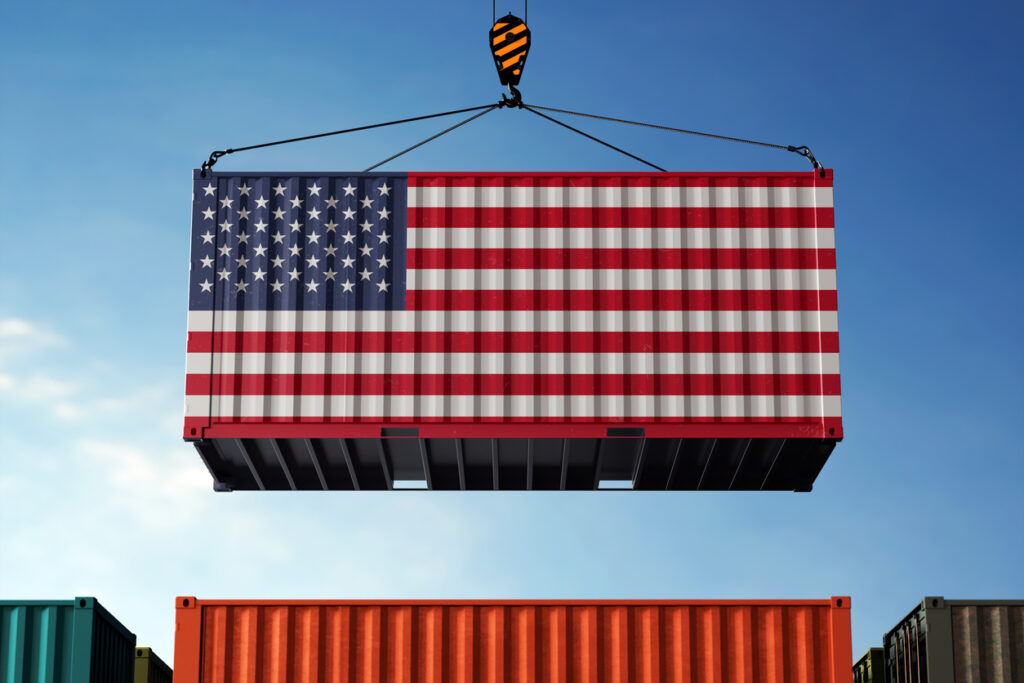
What a Tariff Is and Isn’t
In practical application, a tariff is a tax. There’s no other way to look at it. It is a charge that is levied by the United States Customs and Border Protection Agency and is calculated as a percentage of the value of goods being imported into the United States from some other country. Let’s use the example of a consumer product that has an import value to $10.00. A 25% tariff on that classification of product would mean that when the product is allowed to be imported by U.S. Customs, they will charge the importer a tax of 25% of the $10.00 value on the product. This equates to a charge of $2.50. This $2.50 is therefore revenue that flows into the federal government’s coffers.
In the abstract, a tariff is simultaneously both a weapon and a motivational tool. It’s a weapon because it is intended to be a financial disincentive to import products from other countries. And it’s a motivational tool because it is intended to encourage domestic production and make U.S. produced products more competitive. A tariff strategy also serves as a cudgel to force other countries to negotiate better trade deals, act upon U.S. demands, and inflict financial pain on countries deemed to be unfairly competing.
What a tariff isn’t is sound policy. A tariff strategy causes consumer prices to rise. Remember that incremental $2.50 that gets added to the $10.00 cost of the imported product? That tariff rate has just caused the cost of the product to rise by 25% and in all likelihood some or all of this additional cost will end up getting passed on to the consumer. This will undoubtedly cause a slowdown in U.S. economic growth, an increase in inflation, and job losses.
Now, the argument could be made that a tariff on imported goods helps to shift product demand to domestic products. But the reality is that with the U.S. having lost its manufacturing base decades ago, the manufacturing of products comparable to imported goods isn’t directly correlated. And if those same products do happen to be offered by U.S. based manufacturers, their prices are going to rise due to increases in imported raw materials costs (successful supply chain management and cost optimization demands access to foreign produced raw materials) or opportunistic pricing practices based on a market with fewer competitors.
A tariff strategy also doesn’t offset the lost tax revenue that will result from the extension and expansion of Trump’s 2017 tax cuts. He has stated that he intends to implement this early in his second term.
Finally, implementing a punitive tariff strategy only encourages reciprocal tariffs (a trade war) from affected countries. This causes U.S. exports to drop, further negatively impacting the U.S. economy. The U.S. economy simply cannot function with maximum efficiency without being a robust participant in international trade. Our economy is inexorably tied to the global economy, and an isolationist stance will simply hinder growth and foster increased inflation. Manufacturing in China is very much a part of the supply of products across a myriad of categories, and a trade war with China will undoubtedly hurt American consumers.
What We’ve Been Hearing
Trump recently announced that on day one of his presidency he will levy a 25% tariff on the value of goods imported from Mexico and Canada, and a 10% tariff on all China produced products. These rates are over and above what tariff rates may already be in place. Remember that during Trump’s first term he implemented tariffs on certain categories of products and materials, and the Biden administration kept these tariffs in place.
Trump has also been engaged in a flurry of Cabinet picks. On the economic side, the big three are Scott Bessent for Treasury Secretary, Howard Lutnick for Secretary of Commerce, and Jamieson Greer for U.S. Trade Representative. Bessent and Lutnick are both successful and well respected Wall Streeters and the financial community (and the markets thus far) have responded favorably to these picks. They can have a heavy influence on trade policy and while there is some question as to their experience in this area, nevertheless they are considered to be voices of moderation and reason in implementing economic and trade policy. Greer as Trade Representative is also viewed with cautious optimism. He worked in the first Trump administration under Robert Lighthizer and is also considered a wise pick.
Of course, let’s also recognize that the smartest, most rationale, and most reasonable minds in the room may ultimately be relegated to fetching Diet Cokes while trade policy is doled out during unhinged rantings. In the end, I’d rather see the smart people at least take their best shot at moderation as opposed to not having them there at all.
Tariff rates that have been talked about thus far:
- 25% on Mexico and Canada if they don’t curb the flow of Fentanyl and illegal immigrants into the U.S.
- 10% on China. Also 20%. And as much as 60%
- 10 – 20% on all products imported from all countries around the world.
- Up to 200% on autos assembled in Mexico
- 100% on all products from the BRICS group of countries (Brazil, Russia, India, China, and South Africa) if they abandon the U.S. Dollar as their global reserve currency
Quite a list. It’s anybody’s guess as to what tariff rates get implemented and when. Trump does have the power via executive order to put these tariffs in place, and he has threatened to do so on Inauguration Day.
What Impact Could This Have?
Studies have shown that consumers ultimately do shoulder most of the burden in higher prices for goods. Any shifting of manufacturing to domestic supply tends to be years in the making, so the short term impact is negative for consumers, with little evidence of job growth or benefits to domestic suppliers. It is estimated that Trump’s tariff policy will cost a typical American family an additional $2,600 – $4,000 annually.
If fully applied, tariffs on goods from Mexico will cause grocery prices to rise. Mexico accounts for 69%of U.S. vegetable imports and 51% of fresh fruit imports. Tariffs on Canadian goods could spike gasoline prices, especially in the upper Midwest which relies on Canadian crude oil imports. Also, construction prices are expected to rise, as both Mexico and Canada supply lumber, cement, metals, and machinery among others. Chinese imports run the gambit from raw materials to consumer products in all categories.
Annual imports from China total $551 billion in U.S. dollars, Mexican imports total $421 billion, and Canada imports total $438 billion. That’s $1.4 trillion dollars annually, all subject to tariffs. And to state the obvious, China, Mexico and Canada don’t pay these tariffs- they are either absorbed by the U.S. companies who are doing the importing, passed on to the U.S. consumer, or a combination of both. Regardless, the impact of tariffs on American consumers’ pocketbooks should be blatantly obvious.
Can Trump Impose Tariffs Unilaterally?
In a word, yes. And while Congress has the authority to impose tariffs under Article 1, Section 8 of the U.S. Constitution, Trump has multiple avenues to impose tariffs without needing approval from Congress.
Section 232 of the 1962 Trade Expansion Act lets the president impose tariffs if “national security is threatened”. This was the path Trump took in imposing tariffs for steel and aluminum imports during his first term.
Section 301 of the Trade Act of 1974 allows tariffs when the president determines that a foreign country “is unjustifiable and burdens or restricts United States commerce” through violates of trade agreements. This authority was also used during Trump’s first term on China and the European Union.
Section 203 of the International Emergency Economic Powers Act allows tariffs on all imports during war or an emergency. Trump only needs to issue an executive order to declare an economic emergency.
There are still other avenues by which Trump could impose tariffs unilaterally, but I think I made my point.
What Now?
We’ll continue to keep very close attention to this issue. We are actively working on plans to help to mitigate the impact of tariffs on the imported value to goods we manufacture. Keep an eye out for upcoming articles for more information.


